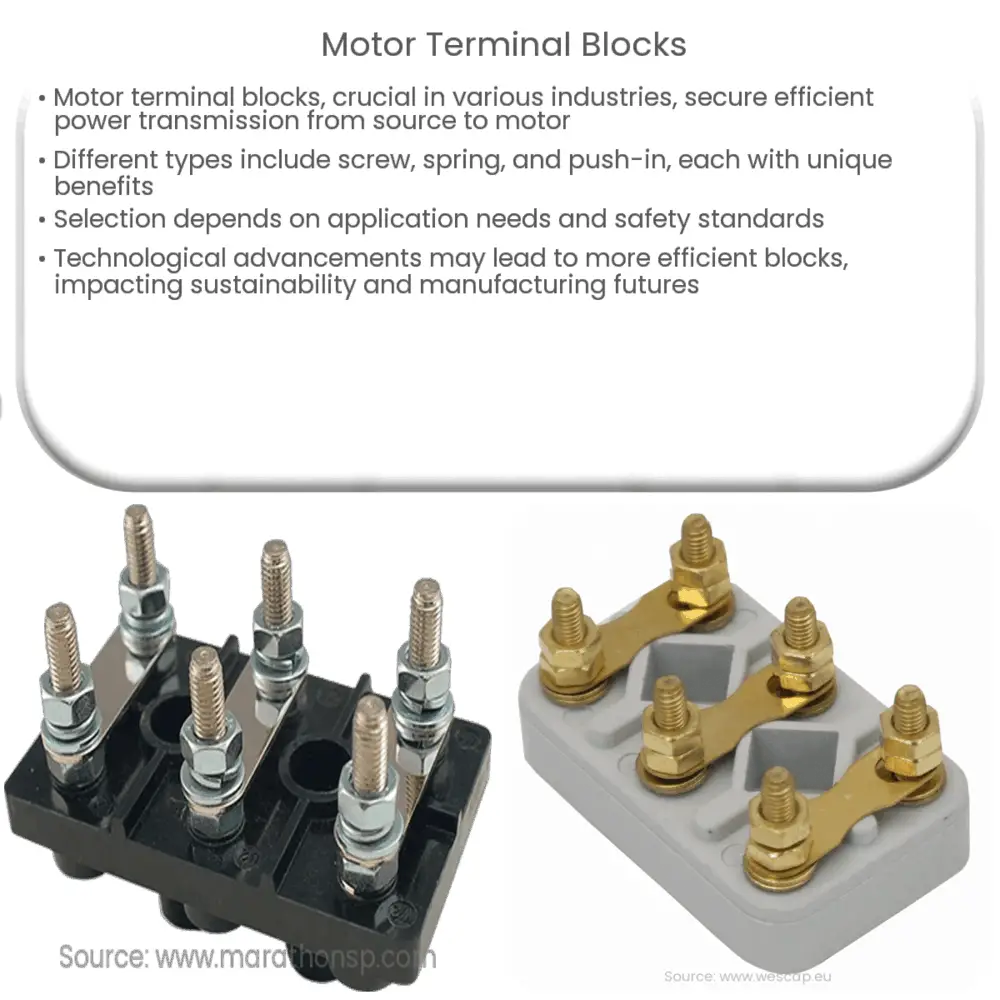Explore the vital role of Motor Terminal Blocks in power transmission, their types, selection, maintenance, and future potential in sustainable practices.

Understanding Motor Terminal Blocks
Motor terminal blocks are integral components in various industries such as manufacturing, automotive, and energy. These blocks serve as connection points between the power source and the electric motor. In this article, we delve into the world of motor terminal blocks, understanding their function, types, and the importance of choosing the right one.
Function of Motor Terminal Blocks
The primary function of a motor terminal block is to ensure secure and efficient transmission of electrical power from the power source to the motor. This is achieved through a series of connections within the block, each meticulously designed to facilitate efficient power transmission and minimize loss. The motor terminal block also serves as a protective unit, shielding the motor and circuitry from potential electrical faults.
Types of Motor Terminal Blocks
- Screw Type Terminal Blocks: This type of terminal block uses screws as the primary mechanism for securing wires. Known for their reliability, they are commonly used in industries that require robust and durable connections.
- Spring Type Terminal Blocks: These terminal blocks employ a spring mechanism to secure wires. Offering easy installation and maintenance, they are ideal for applications that require frequent wire changes or checks.
- Push-In Type Terminal Blocks: As the name suggests, these blocks allow for wires to be inserted through a push-in mechanism. They are known for their convenience and speed of installation.
Choosing the Right Motor Terminal Block
Choosing the right motor terminal block involves understanding the needs of the specific application. Some of the factors to consider include the electrical load capacity, the environment in which the motor operates, the type of wiring, and the ease of maintenance. Each type of terminal block has its pros and cons, which need to be evaluated in the context of these factors.
Additionally, safety should be a paramount consideration when selecting a motor terminal block. The block must adhere to the relevant safety standards and regulations, ensuring the prevention of potential electrical faults and minimizing the risk of damage to the motor and circuitry.
The Impact of Motor Terminal Blocks on Efficiency
Motor terminal blocks play a critical role in improving the efficiency of electrical systems. They not only ensure efficient power transmission but also reduce electrical resistance, thereby lowering energy consumption. This subsequently leads to cost savings and enhanced performance of the motor.
Motor Terminal Blocks and the Future
The future of motor terminal blocks is likely to be driven by advances in technology and increasing demands for energy efficiency. New materials and design techniques may yield more durable and efficient terminal blocks, able to handle higher electrical loads with reduced energy loss. For instance, we might see greater use of conductive polymers or nanomaterials that offer superior electrical conductivity. Additionally, the rise of smart manufacturing and the Industrial Internet of Things (IIoT) may lead to motor terminal blocks equipped with sensors for real-time monitoring and troubleshooting.
Installation and Maintenance of Motor Terminal Blocks
Proper installation and maintenance are key to ensuring the long-term performance and safety of motor terminal blocks. Following manufacturer instructions and adhering to relevant standards are crucial during installation. Likewise, regular checks and maintenance can help detect any potential issues early, preventing major faults and disruptions. During maintenance, attention should be given to the integrity of the connections, any signs of corrosion or damage, and the condition of the terminal block’s insulation.
The Role of Motor Terminal Blocks in Sustainable Practices
In the drive towards sustainability, motor terminal blocks can contribute by enhancing energy efficiency and reducing waste. Efficient power transmission leads to less energy being wasted as heat, reducing carbon emissions. Furthermore, the use of recyclable or biodegradable materials in the manufacturing of terminal blocks can contribute to a circular economy, reducing the environmental footprint of these essential components.
Conclusion
In conclusion, motor terminal blocks are a fundamental element in the operation of electrical motors, providing secure and efficient power transmission. Understanding their function, the different types available, and the importance of proper selection, installation, and maintenance are crucial. The future of these components is likely to be marked by technological advances and sustainability considerations, making them not only essential for current industries but also vital in driving the future of manufacturing, automation, and energy.

